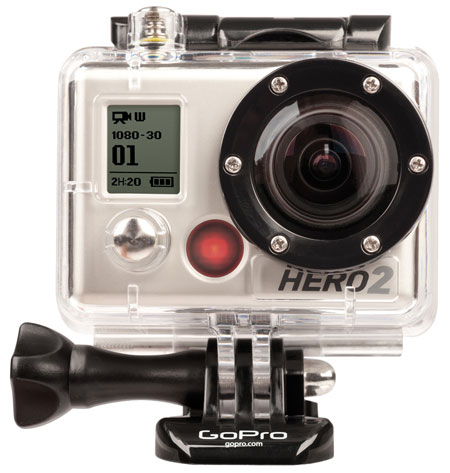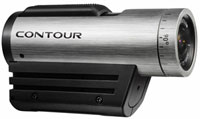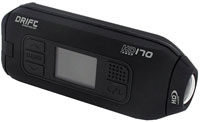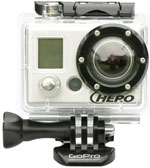GoPro HD Hero 2
-
-
Written by Ken McMahon
Verdict
The GoPro HD Hero 2 is a weatherproof, shockproof and nearly indestructible camera designed with the extreme sportsperson in mind. With the right mounting, you can attach it to your helmet, bike, surfboard, ski binding, car and nearly anything else you can think of.
The video side of the camera has been upgraded to capture 1080p footage with ultra-wide 170 degree coverage, while still photos have more than doubled in resolution from 5 to 11 Megapixels. The crispness, saturation and noise levels of both video and stills are also much improved over the earlier HD hero.
The HD Hero 2 has a range of features that will appeal to both traditional photographers and adventurers looking to capture their exploits. As a still camera you can shoot 10fps in a one second burst or record time-lapse over a range of increments. As a video camera it can shoot in full HD, record passable sound, capture 120fps slow motion at WVGA and with a 170deg field-of-view, filming yourself or taking in all the action is both easy and straightforward. Then there’s the potential of the upcoming Wifi BacPac and smartphone control to look forward to.
The GoPro has traditionally been the camera to which all wearable sports cameras are compared to and with the improvement in the HD Hero 2 that comparison won’t be stopping anytime soon. So before my final verdict let’s see how it compares to the competition.
 | |
Compared to Contour +
The Contour + is a traditional helmet-cam shaped camera , so looks much sleeker than the boxy HD Hero. It’ll also shoot 1080p video with a 170 degree field of view.
Where the Contour takes the lead over the HD Hero 2 is with some clever built-in features that GoPro is still missing. Most notable is built-in GPS that allows you to geotag your footage so you can see what mountain bike trail you were storming down. The Contour + also features built-in Bluetooth which lets you view your composition or replay footage via a compatible smartphone (although frustratingly Apple iOS owners will also need an additional communication card – check as some stores sell it with this card). If you have to buy a wireless accessory this arguably puts the Contour + in a similar boat to the upcoming (and more powerful) Wifi BacPac for the HD Hero 2, but again the Contour + has Bluetooth built-in and it will talk to compatible Android handsets without any extras.
Another plus for the Contour + is an external mic jack that can be used while the camera is in action, whereas the HD Hero 2’s jack becomes inaccessible once it’s in its casing and few would use the camera without it.
What the Contour + lacks though is the robust waterproof nature of the GoPro as standard. An underwater housing is available for the Contour +, but the fact is the HD Hero 2 comes with a casing as standard which is good to depths of 60m. The HD Hero 2 also shoots 11 Megapixel stills (compared to 5 on the Contour +), it features a 120fps WVGA mode for slow motion capture, and a timelapse mode which can shoot at shorter intervals.
Though both cameras will perform to similar levels, as a consumer you have to decide which features are most important – if you value built-in GPS, an external mic jack that’s more accessible during use and a sexier looking unit, then go with the Contour +. If you want something that’s tougher and more waterproof as standard, not to mention shoots slow motion video and higher resolution stills, then the HD Hero 2 is hard to beat.
Compared to Drift HD170
The Drift HD170 is another helmet-cam styled model which looks sleeker than the HD Hero 2, and also shoots 1080p video with 170 degree coverage. Two things really set the Drift HD170 apart from its rivals though: the first is a lens that can be turned on the unit to adjust the point of view. This is a handy feature when mounted to a helmet and you want to adjust the view upwards or downwards to better take in the action.
The second unique feature of the Drift HD170 is it’s the only model on this page to feature a built-in screen. Although it’s tiny at 1.5in it allows you to review your footage in the field before getting to a computer. The Drift also has a more accessible external microphone jack and a wireless trigger that can activate the device from up to 5m away. This is most useful when wanting to trigger the camera from a safe distance away from the action – say for example you attach it to jump in the park. It’s also the only model here to feature a standard quarter-inch tripod thread, which some may find more useful for mounting.
Once again, the HD Hero 2’s advantages remain a tough underwater housing supplied as standard, higher resolution stills (11 vs 9 Megapixels), a 120fps slow motion movie mode, and a timelapse mode which can shoot at shorter intervals.
So like the Countour + above, you’ll need to decide which features are most important to you. If you value things like a built-in screen, a more accessible mic jack and a 1/4in tripod mount, then it could be the model for you. But again if you want something that’s tougher and more waterproof as standard, not to mention shoots slow motion video and higher resolution stills, then the HD Hero 2 is again hard to beat.
Compared to GoPro HD Hero 1 (original)
The closest rival to the HD Hero 2 is of course the original HD Hero. From the outside the two units are nearly identical and you can swap accessories freely between them (excluding some features on the new Wi-Fi back).
While the new model externally resembles the HD Hero original, there are a number of important physical benefits in its favour. You may lose the analogue component video output, but gain an HDMI port in addition to a 3.5mm external microphone jack, although the latter is of limited use, given it’s inaccessible with the protective housing fitted. The improved graphics and wording on the display also make operation much easier and more intuitive, and the addition of three more lamps around the shell ensure you’ll know if the unit is recording regardless of where and how it’s mounted.
The new sensor and lens have seen the still photo resolution more than doubled from 5 to 11 Megapixels and 1080p video now supported with a 170 degree field of view; there’s also a new 120fps WVGA option for those who like slow motion. The image and video quality is also much improved in terms of saturation and noise levels, and the response to varying lighting much quicker.
Given the option as to which unit to purchase, the choice is an easy one. Despite the moderate increase in price the HD Hero 2 is a far superior camera. Existing GoPro fans will find the transition to the Hero 2 an easy one and new users will find the intuitive controls quick to master.
At the outset of this test I was expecting the performance of this camera would be about the same as the HD Hero and I’d be recommending current GoPro users to either hold onto their units or buy this as a second camera. After going through all of the test footage though, even using the original HD Hero as a second ‘B-roll’ camera may not be an option as the colors and sharpness are so superior on the new model, the footage simply won’t match.
This isn’t a small incremental improvement in the GoPro line, the HD Hero 2 is a significant improvement in an already successful and capable camera. If you’ve decided a GoPro camera best fits your needs, then go for the new one.
GoPro HD Hero 2 Final verdict
There are really two ways to evaluate the GoPro HD Hero 2. You can look at it as a stand-alone product or compare it to its predecessor the GoPro HD Hero. As a stand-alone camera it excels at the tight niche it works within, but there are key downsides to be aware of.
If you are simply looking for an 11 Megapixel still photo camera you can do much better. If you are looking for a compact video camera that will shoot 1080p footage with ultra wide coverage, the Hero 2 is pretty much the only one on the market that won’t even let you see what you are shooting as standard. If you’re looking for a camera to take on holiday or shoot your sister’s wedding, this certainly isn’t the one for you.
However, if you are looking for a video camera that you can take skiing, mountain biking, surfing and skateboarding and not only survive but bring back some great footage this is the best camera on the market.
With the ability to attach the camera in a multitude of ways and the virtual indestructible nature of the device in its supplied protective housing, the HD Hero 2 is a fun camera to take places you wouldn’t dream of taking your SLR or high end compact.
The image quality of the still photos is improved, but still leaves much to be desired. If the lighting isn’t optimal the images are often noise cluttered and sub-par from a purely analytical point of view. From an emotional standpoint though, the images that this camera allows you to capture often more than make up for its technical shortfalls. Sure the image quality from even a point-and-shoot compact may be superior – but you can’t strap one of those to your chest the next time you go whitewater rafting and expect it to still work afterwards.
The HD Hero 2’s video quality is impressive and in good light the footage looks outstanding. This unit truly is a video camera with a stills capability thrown in. It’s hopeful that future incarnations of the camera will address the low-light noise issues and make it a more well rounded camera. Until that time the outstanding video performance props up the still camera and together they achieve a high level of performance.
At a relatively inexpensive price point this is the sort of camera that you can use and abuse knowing that if it gets trashed you can always pick up another one. With that in mind the future will see dedicated users with not just one of these cameras, but several to record the action from a variety of angles.
If you are a dedicated action sports film maker and are looking for top quality imagery the new Hero 2 outshines its predecessor to the point that it’s a worthy upgrade. With the new Wi-Fi back on the near horizon and the option to live view, replay and stream to the web (only on the Hero 2 and not any of the previous models) – this new model is well worth upgrading into.
If you’re looking for an action sports helmet camera GoPro has once again set the standard and raised the bar for all others to chase. It’s also an ideal ‘B’ camera to supplement footage filmed with your DSLR or camcorder under tougher conditions. Overall an easy camera to Highly Recommend.
| Scores (relative to HD Hero 1) |
 | ||
Build quality: Image quality: Video quality: Handling: Specification:
Overall: |
18 / 20 15 / 20 18 / 20 17 / 20 17 / 20
85% | |||







